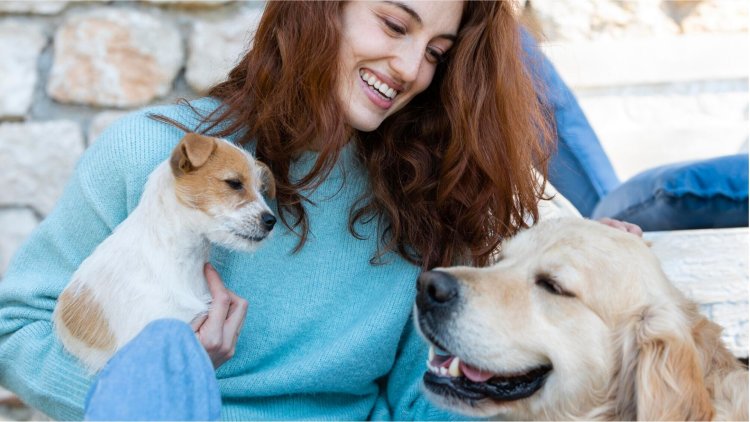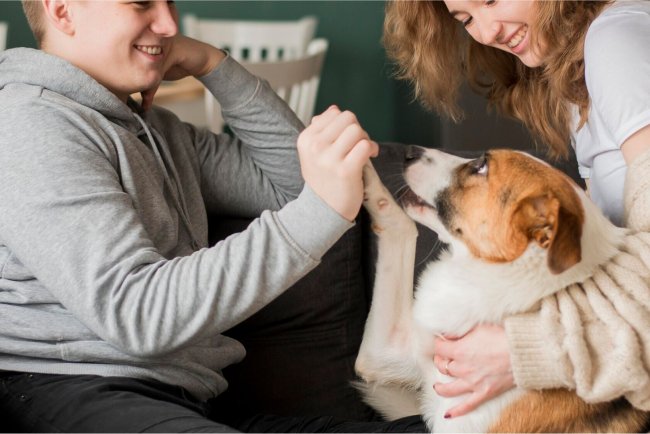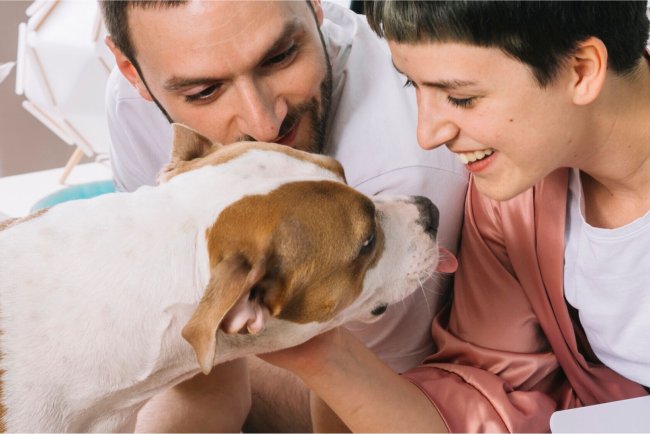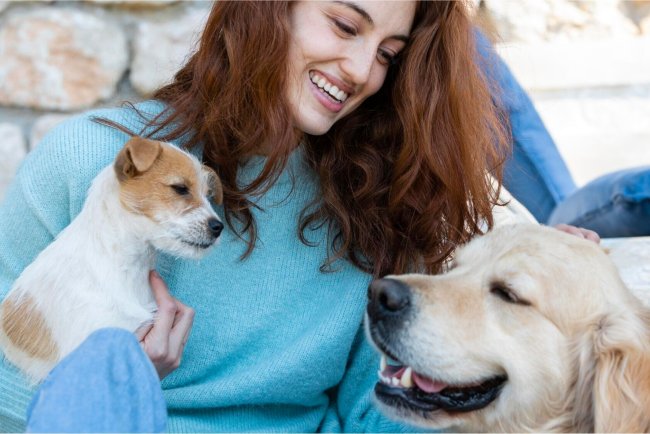Third-Party Liability Dog Cover- A Comprehensive Guide
In today's society, owning a dog comes with various responsibilities, including ensuring the safety of others.

In today's society, owning a dog comes with various responsibilities, including ensuring the safety of others. One crucial aspect of responsible dog ownership is having the right insurance to cover potential liabilities. Third-party liability dog insurance, often simply referred to as third-party liability cover, is designed to protect dog owners from the financial consequences of their pets causing harm or damage to others. This type of insurance is not only essential for safeguarding your finances but also for complying with legal obligations and promoting responsible pet ownership.
What is Third-Party Liability Dog Insurance?
Definition and Coverage
Third-party liability dog insurance is a specialized policy that provides coverage for damages or injuries caused by your dog to third parties. This means that if your dog bites someone, damages someone's property, or causes other types of harm, the insurance will cover the costs associated with these incidents.
Types of Incidents Covered
Common scenarios covered by third-party liability insurance include:
- Dog Bites: If your dog bites someone and causes injury, the insurance will cover medical expenses and compensation claims.
- Property Damage: If your dog damages someone's property, such as destroying furniture or causing a car accident, the insurance will cover repair or replacement costs.
- Legal Costs: In the event of a legal dispute, the insurance may cover legal fees and court costs.
Distinction from General Pet Insurance
It's important to differentiate third-party liability insurance from general pet insurance. While general pet insurance covers veterinary bills and health-related expenses for your dog, third-party liability insurance focuses solely on the financial impact of your dog's actions on others.
Why is it Important?
Legal and Financial Consequences
Without third-party liability coverage, you could face significant financial repercussions if your dog causes harm or damage. Legal claims and medical bills can be substantial, and without insurance, you would need to pay these expenses out of pocket. In some cases, failing to have appropriate insurance could lead to legal action against you, potentially resulting in hefty fines or even bankruptcy.
Examples of Common Claims
Consider the following examples:
- A Dog Bite Incident: A dog bites a passerby in a park, resulting in serious injuries. The medical bills and compensation for pain and suffering could amount to thousands of dollars.
- Property Damage: A dog escapes from a yard and damages a neighbor’s car. The cost of repairs or replacement could be significant.
Risks for Specific Dog Breeds or Behaviors
Certain dog breeds or behaviors may increase the likelihood of claims. For example, larger breeds or dogs with a history of aggressive behavior may be more prone to causing injuries or property damage. In these cases, having third-party liability insurance is even more critical.
Key Features of Third-Party Liability Dog Cover
Coverage Limits
Third-party liability dog insurance typically comes with coverage limits, which is the maximum amount the insurer will pay for a claim. It's important to choose a policy with adequate coverage to ensure you are fully protected. Coverage limits can vary widely between policies and providers.
Exclusions
While third-party liability insurance covers many incidents, there are certain exclusions:
- Incidents Involving the Policyholder: The insurance generally does not cover injuries or damages involving the policyholder or their household members.
- Pre-Existing Conditions: If your dog had a history of aggressive behavior before you purchased the policy, incidents arising from this behavior might not be covered.
Additional Benefits
Some policies offer additional benefits, such as:
- Legal Expenses Coverage: Coverage for legal fees if you need to defend yourself in court.
- Emergency Veterinary Fees: Coverage for emergency veterinary costs if your dog is injured while causing harm.
How to Choose the Right Policy
Factors to Consider
When selecting third-party liability insurance, consider the following factors:
- Dog Breed: Certain breeds may be considered higher risk, affecting the cost and coverage options.
- Living Environment: If you live in a densely populated area or have a large yard where your dog can roam, your risk profile may differ.
- Policy Coverage: Ensure the policy covers a wide range of incidents and has sufficient coverage limits.
Comparing Policies
To find the best policy, compare offerings from different insurance providers. Look for:
- Coverage Details: Check what is included and excluded in each policy.
- Cost: Evaluate the premium and any additional costs.
- Customer Reviews: Research reviews and ratings of insurance providers to gauge their reliability and customer service.
Questions to Ask
Before purchasing a policy, ask the following questions:
- What is the coverage limit for third-party liability claims?
- Are there any exclusions or conditions I should be aware of?
- How does the policy handle claims and payouts?
Real-World Examples of Third-Party Claims
Case Studies
-
The Park Incident: A dog running off-leash in a park bit a jogger, resulting in severe injuries. The insurance covered the medical expenses, legal fees, and compensation for pain and suffering.
-
The Car Damage: A dog escaped from a yard and caused a traffic accident by running onto the road. The policy covered the repair costs for the damaged vehicle and legal fees for the driver's claim.
Impact on Policyholders and Third-Party Victims
In both cases, having third-party liability insurance alleviated the financial burden on the dog owners and ensured that the victims received compensation for their losses.
Cost of Third-Party Liability Dog Insurance
Factors Influencing Cost
Several factors affect the cost of third-party liability insurance:
- Dog Breed: High-risk breeds may result in higher premiums.
- Location: Insurance costs may vary based on where you live.
- Coverage Amount: Higher coverage limits typically lead to higher premiums.
Average Price Range
On average, third-party liability dog insurance can cost between $50 and $200 per year, depending on the factors mentioned above. While this may seem like an additional expense, it is a small price to pay compared to the potential costs of an incident.
Cost vs. Potential Financial Risk
Considering the potential financial risk of not having insurance, the cost of coverage is relatively low. An insurance policy provides peace of mind and protection against unforeseen events that could otherwise lead to significant financial strain.
Legal Considerations
Local Laws
Different regions have varying laws regarding dog ownership and liability. Some areas may require dog owners to have third-party liability insurance, while others may have different regulations. It’s important to familiarize yourself with local laws to ensure compliance.
Penalties for Uninsured Incidents
In the event of an uninsured incident, you could face legal penalties, including fines or civil lawsuits. Having third-party liability insurance helps you avoid these potential consequences and ensures that you are fulfilling your legal responsibilities as a dog owner.
Final Thoughts
Third-party liability dog insurance is an essential aspect of responsible dog ownership. It provides protection against the financial impact of your dog causing harm or damage to others, covers legal expenses, and ensures compliance with legal requirements. By understanding the coverage, choosing the right policy, and considering real-world implications, you can safeguard both your finances and your peace of mind. As a responsible dog owner, investing in third-party liability insurance is a proactive step towards ensuring the safety and well-being of your community while enjoying the companionship of your furry friend.
What's Your Reaction?



















